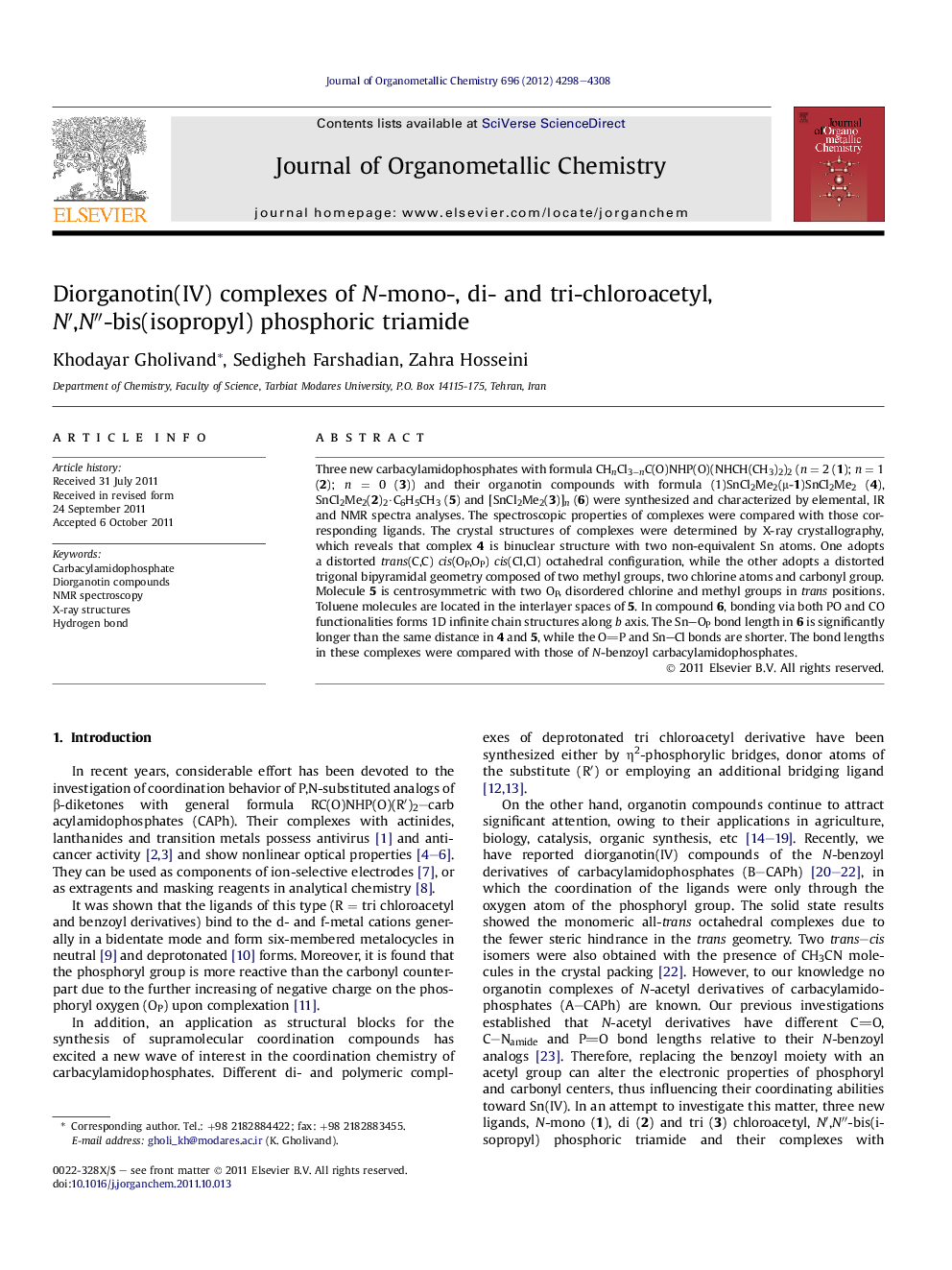| Article ID | Journal | Published Year | Pages | File Type |
|---|---|---|---|---|
| 1326504 | Journal of Organometallic Chemistry | 2012 | 11 Pages |
Three new carbacylamidophosphates with formula CHnCl3−nC(O)NHP(O)(NHCH(CH3)2)2 (n = 2 (1); n = 1 (2); n = 0 (3)) and their organotin compounds with formula (1)SnCl2Me2(μ-1)SnCl2Me2 (4), SnCl2Me2(2)2·C6H5CH3 (5) and [SnCl2Me2(3)]n (6) were synthesized and characterized by elemental, IR and NMR spectra analyses. The spectroscopic properties of complexes were compared with those corresponding ligands. The crystal structures of complexes were determined by X-ray crystallography, which reveals that complex 4 is binuclear structure with two non-equivalent Sn atoms. One adopts a distorted trans(C,C) cis(OP,OP) cis(Cl,Cl) octahedral configuration, while the other adopts a distorted trigonal bipyramidal geometry composed of two methyl groups, two chlorine atoms and carbonyl group. Molecule 5 is centrosymmetric with two OP, disordered chlorine and methyl groups in trans positions. Toluene molecules are located in the interlayer spaces of 5. In compound 6, bonding via both PO and CO functionalities forms 1D infinite chain structures along b axis. The Sn–OP bond length in 6 is significantly longer than the same distance in 4 and 5, while the OP and Sn–Cl bonds are shorter. The bond lengths in these complexes were compared with those of N-benzoyl carbacylamidophosphates.
Graphical abstractThe synthesis of organotin(IV) complexes possessing three different N-chloroacetyl derivatives of phosphormides is reported. The monochloroacetyl ligand coordinates tin(IV) in two different fashions, and forms a binuclear complex; the dichloroacetyl ligand coordinates tin(IV) monodentally; and the trichloroacetyl binds to tin(IV) via both PO and CO functionalities, forming 1D chain structure.Figure optionsDownload full-size imageDownload as PowerPoint slideHighlights► N-mono, di and tri chloroacetyl phosphoric triamides have been synthesized. ► The molecular structure of their diorganotin complexes were determined and compared. ► The ligands show different coordination behavior. ► The structures of these diorganotins were compared with their N-benzoyl analogs.
